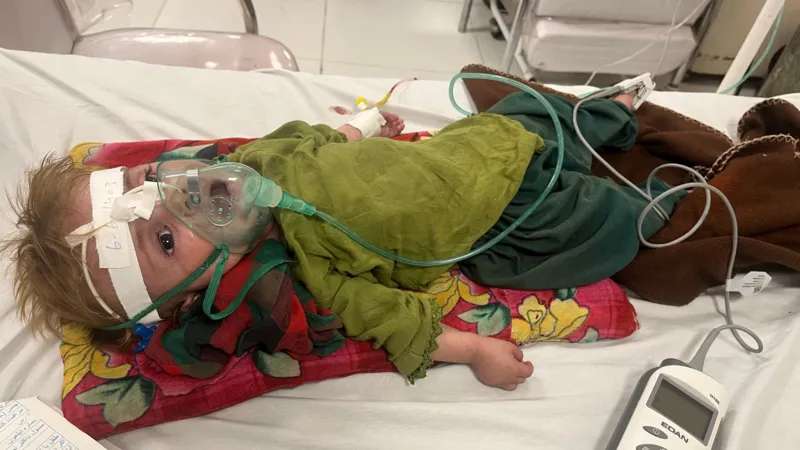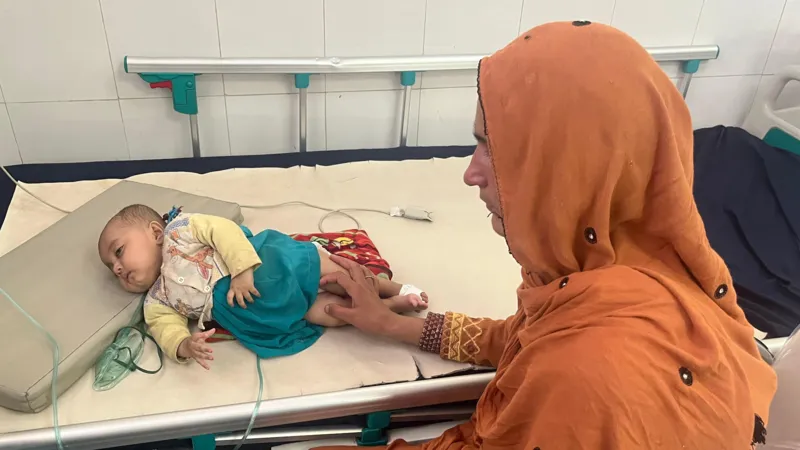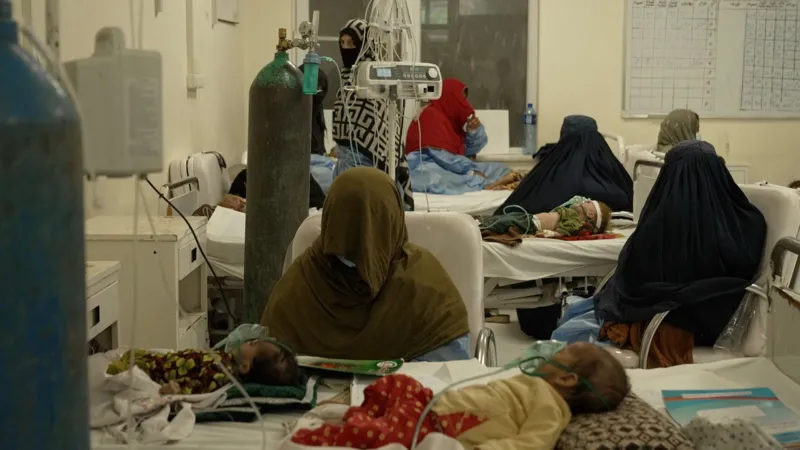In a crowded hospital ward in Jalalabad, Afghanistan, Amina sits with tears streaming down her face, holding her tiny seven-month-old daughter, Bibi Hajira, in her arms. Bibi is the size of a newborn baby and severely malnourished. For Amina, this moment is like a nightmare she can’t wake up from. She has already lost six of her children; none lived past the age of three. Now, she is on the verge of losing another child.
“I feel like my heart is breaking. My children are dying because of poverty,” Amina cries. “All I can give them is dry bread and water heated in the sun.”
Amina’s story is not unique. Afghanistan is struggling with a severe malnutrition crisis, affecting millions of children across the country. The crisis has been going on for decades, driven by more than 40 years of war, extreme poverty and natural disasters. The situation has worsened since the Taliban took over three years ago. Today, more than 3.2 million children in Afghanistan suffer from acute malnutrition. The small hospital in Jalalabad,

in eastern Nangarhar province, gives a glimpse of this humanitarian disaster. There are 18 children on just seven beds in the ward. There are no cries or sounds from the children; they are unable to move or make a sound. The room is eerily quiet, interrupted only by the occasional beep of a pulse monitor. On a single bed, Bibi Hajira lies next to a three-year-old girl named Sana, who is wearing a purple tunic. Sana lost her mother in childbirth a few months ago. Now her aunt Laila takes care of her. Laila shows me seven fingers, which represent the number of children she has lost to hunger and disease. On the bed next to her is Ilham, a frail three-year-old boy whose skin is peeling from malnutrition. Her sister died at the age of two. On the other bed, one-year-old Asma struggles to breathe through an oxygen mask. Her brown eyes, framed by long lashes, stare at the ceiling. She is in septic shock, and Dr. Sikandar Ghani, a doctor at the hospital, does not believe she will survive.
A struggle to survive
Asma’s mother, Naseeba, is overcome with grief. She has already lost three children. “It’s as if my body is on fire. I can’t see her suffering like this,” she says in a trembling voice. Naseeba’s husband, a daily wage laborer, works whenever he can. But work is scarce, and they often have nothing to eat.
The sad part is that Asma dies less than an hour later. Her death is one of 700 children who have died at the hospital in the past six months – an average of more than three per day. This staggering number could have been even higher if not for funding from international organisations such as the World Bank and UNICEF, which have kept the hospital running. Before the Taliban took control in August 2021, almost all public healthcare in Afghanistan was funded by international donors. However, when the Taliban came to power, international sanctions halted this funding, leaving the healthcare system in a state of disarray. Aid agencies stepped in to provide emergency assistance, but it was never intended to be a permanent solution. Now, as global attention shifts elsewhere, funding for Afghanistan has decreased sharply. The Taliban’s policies, particularly restrictions on women, have also made donors hesitant to provide aid. “We inherited this problem of poverty and malnutrition,” says Hamdullah Fitrat, deputy spokesman for the Taliban government. “It has gotten worse because of natural disasters such as floods and climate change. The international community must increase humanitarian aid and not mix it with political issues.” A cry for help During each visit to Afghanistan’s hospitals over the past three years, the dire situation has become even more desperate. But despite the dire conditions, there is hope. Dr Ghani reports that Bibi Hajira, who was very weak when she was admitted, has recovered thanks to timely treatment and has been discharged. “If we had more medicines, more facilities and more staff, we could have saved more children. We are committed and ready to do more,”

he says. “When a child dies, we feel very sad. We know what parents are going through.” In another room in the hospital, six-month-old Umrah is battling severe pneumonia. She cries in pain as the nurse applies a saline drip to her tiny body. Her mother, Nasreen, is filled with fear and sadness. “I wish I could take her place. I am so scared,” she says. Two days after our visit, Umrah also died.
These are just the stories of the children who made it to the hospital. Countless others never make it to a healthcare centre. At Jalalabad Hospital, only one in five children receives treatment. The pressure on the hospital is so great that soon after Asma’s death, a new patient, three-month-old Aliya, is moved to the bed Asma had left vacant. The doctors and nurses have no time to express their grief; there is always another child in the hospital.

